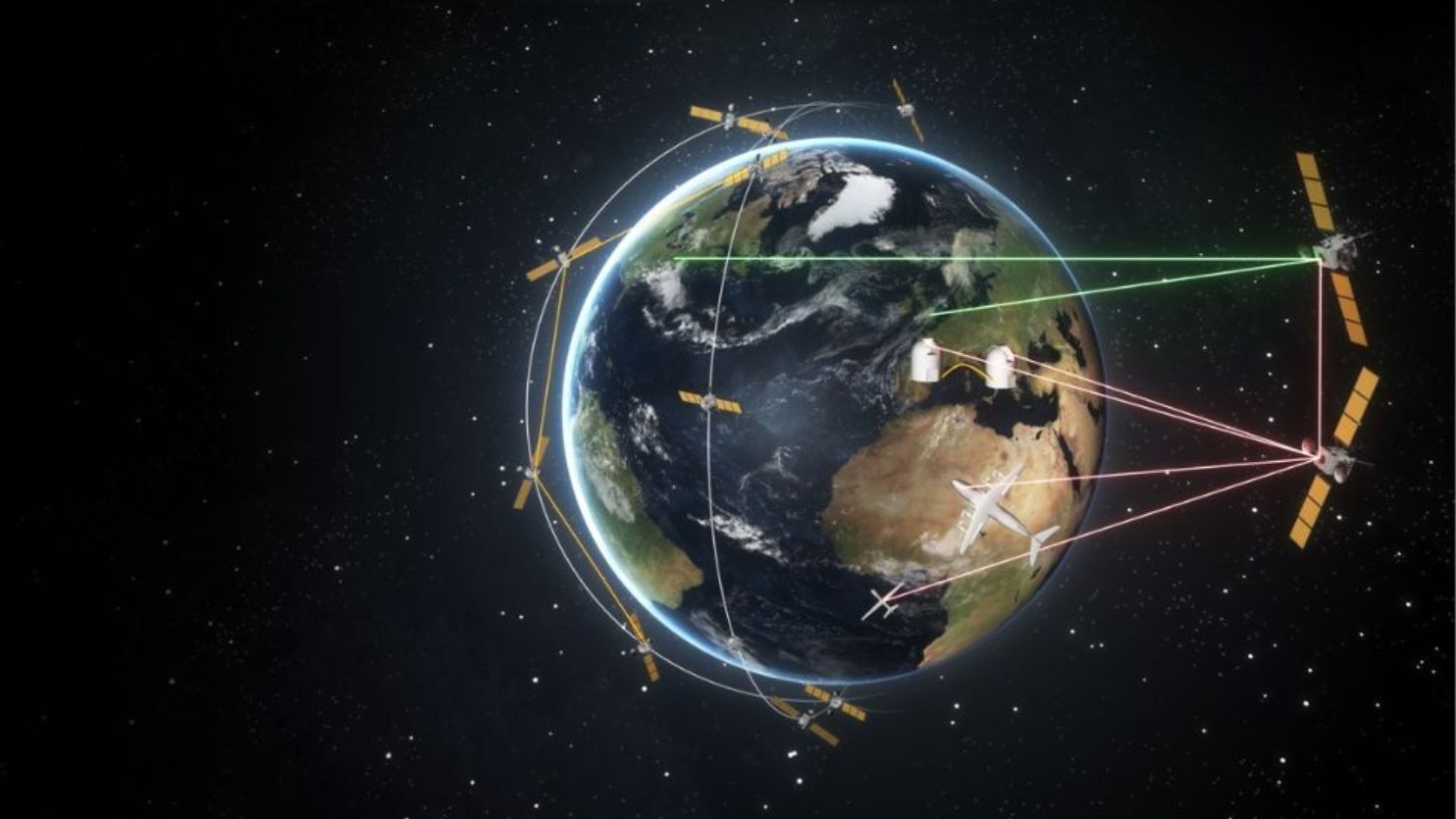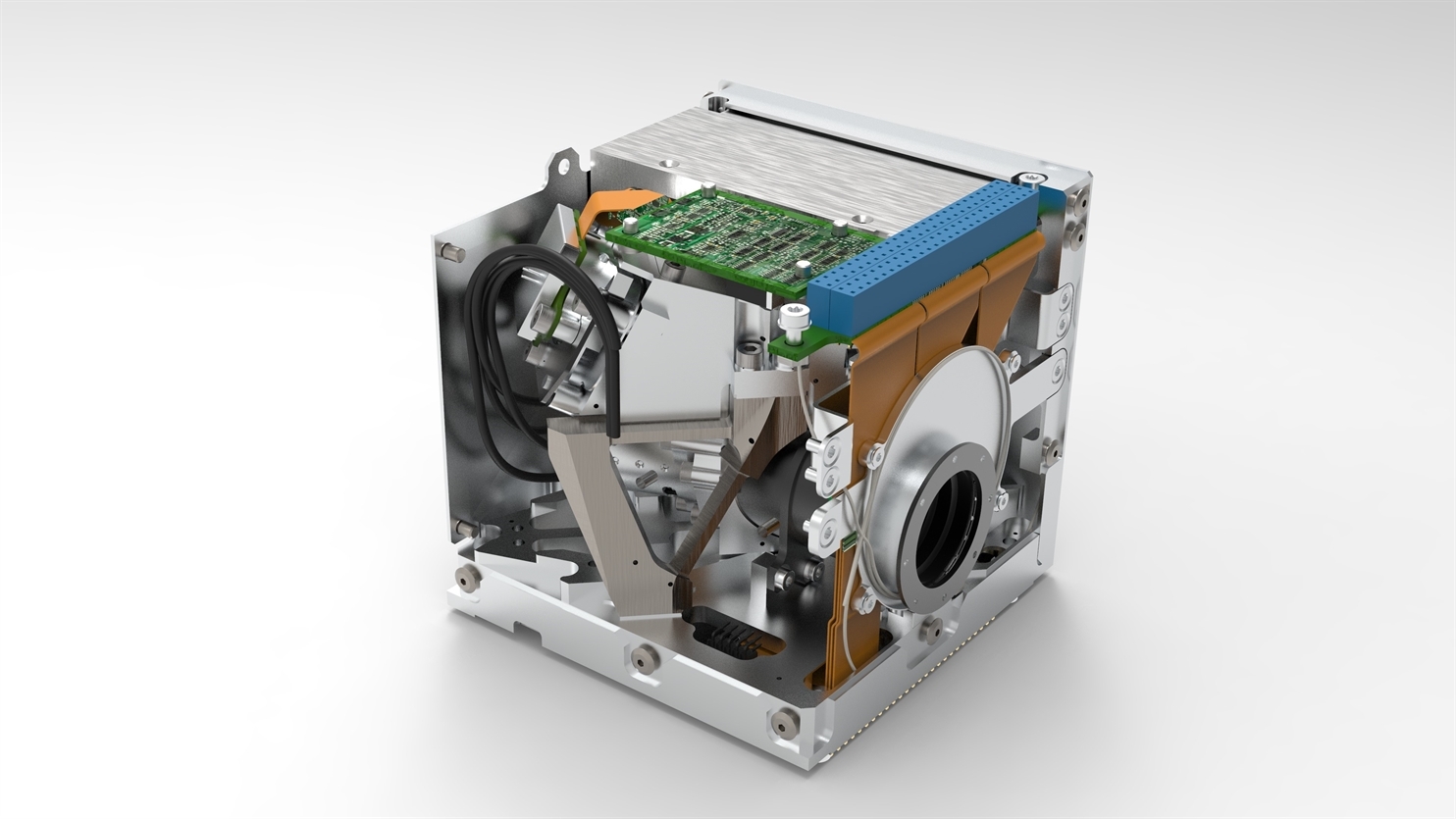19.03.2024

Illustration global laser communication network
TNO and FSO Instruments today announced that they have entered into license and cooperation agreements. Under the agreements FSO Instruments will obtain worldwide rights to industrialize and commercialize TNO’s laser satellite communication technology. This optical technology enables much faster and more secure broadband connectivity than the radio frequencies that are currently used. The agreement marks both parties’ commitment to build up a long-term partnership to establish an European ecosystem for laser satellite communication, based in the Netherlands.
Long term cooperation
The twenty-year license agreement enables FSO Instruments to use TNO’s technology and expertise in optical heads, optical benches and system for coarse pointing alignment. FSO Instruments builds on TNO technology and integrates it into products that can be produced reliably and efficiently in series for commercial use. In addition to a license agreement for technologies used today, TNO and FSO Instruments have also agreed to a long-term cooperation for the development of innovative technologies and applications for laser communication. In this cooperation TNO will focus on early technology development and demonstrators while FSO instruments will be responsible for technology industrialization, manufacturing, and market development.
Will Crowcombe, Managing Director FSO Instruments: “TNO is a key partner for FSO Instruments. Our cooperation that industrializes valuable applied research into commercial products is a textbook example of valorization. This agreement enhances our capacity to create the supply chain we need to be a leading provider of optical heads for laser satellite communication.“
First success
TNO has been developing and building optical instrumentation for use in space, in particular for astronomy and earth observation for decades. Recently, TNO successfully transferred data between a satellite and a ground station in The Hague via self-developed laser communication technology. This marked a world first for fast optical communication to earth using a small and light optical terminal with Dutch technology. FSO Instruments builds on that technology in their systems.
Laser satellite communication
Laser satellite communication operates by forming laser beams and transmitting them across large distances. The technology provides links between ground stations, satellites, aircraft and unmanned aerial vehicles. It can achieve data transfer speeds of 100 to 1000 times faster than radio frequencies
currently used for communications. It is also more secure because very narrow optical laser beams are used instead of much wider spread radio signals. Laser satellite communication requires complex technology, opto-mechatronics, to ensure fast and reliable links. It enables the required further growth of communication to and through space powering many applications in the process. Examples of this are more secure internet banking, self-driving cars, fast and reliable internet in aircraft and offshore platforms as well as in in rural areas for consumers, governments, and businesses. Next to that it can protect soldiers on missions through more secure military communications, making it relevant for defense purposes as well.
Fast growing market
Due to the growth in data consumption, laser communication technology is currently on the rise. The global demand for laser satellite communication applications and components is expected to grow exponentially in the near future. The Netherlands has the ecosystem and capacity to develop series production of high-quality instruments for laser satellite communication. FSO Instruments, founded last year, is the first Dutch company in this field. It develops and produces optical heads for laser satellite communication terminals.

Module for laser satellite communication © FSO
Quelle: TNO

